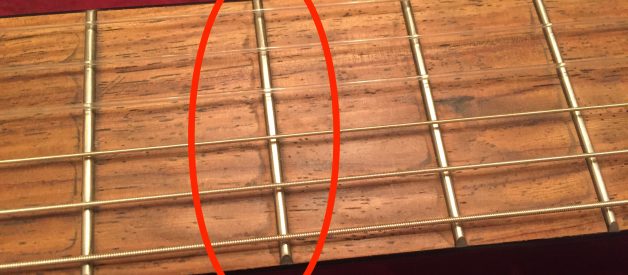Luthier extraordinaire Garrett Lee joins us again for his third installment of Guitar Care 101. This week he walks us through the simple steps of cleaning and oiling your fretboard. Catch up on Gary?s last posts on choosing a guitar case and humidification here and here, and watch out for more luthier insider tips coming to tonebase this month!
Does this look familiar??
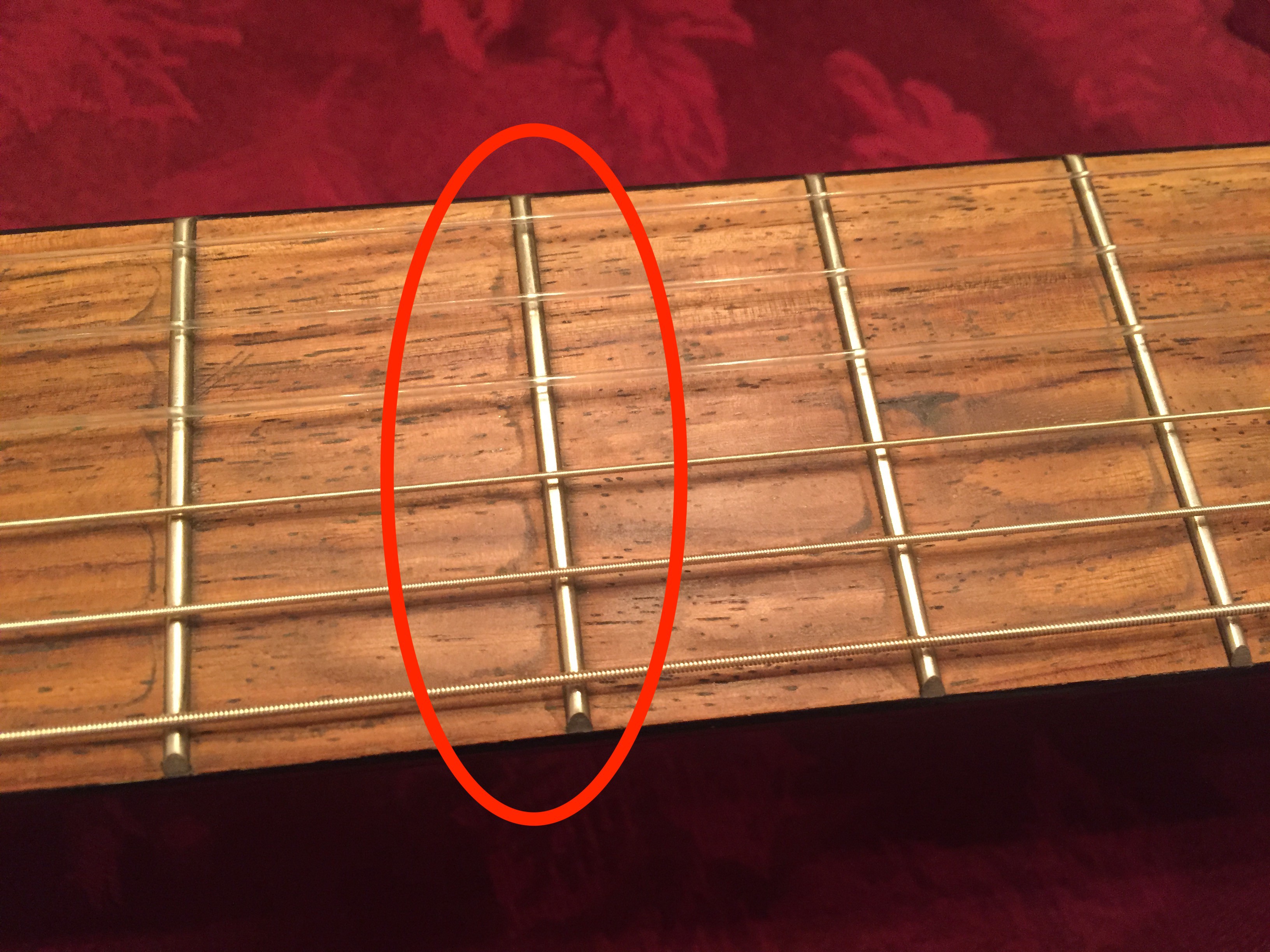
Gunk. Grime. Gook.
There?s no official name for it, but you?ve probably had it on your fingerboard. It?s not necessarily a bad thing. The waxy amalgamation of sweat, skin and dirt is a badge of honor signifying that you?ve put in serious practice time.
While the build-up is not directly harmful to your guitar, here are a few reasons why you might want to invest 15 minutes once or twice a year to clean and oil your fingerboard:
- A clean guitar gives you a better outlook on your instrument and playing. You might practice more.
- Cleanliness might increase the longevity of your bass strings. Sweat and dirt are bass killers as they corrode the metal windings and dull the sound. A clean fingerboard keeps the perpetrators out of range. For complete preventative medicine, also consider washing your hands before playing.
- If you?re in the market to sell your instrument, a better look will earn you more money.
Cleaning and Oiling your Fingerboard
If your fingerboard is free of gunk, all you need to do is oil it.
Buy a bottle of mineral oil at the grocery store. With all the strings off the tuners and stuffed into the sound hole, apply some oil on a folded paper towel and wipe it on the face of the fingerboard. It?s fine to wipe it on the frets. Avoid adding so much oil that it runs over the edge of the fingerboard and down the neck. If it does, simply wipe away the drips with a new towel.
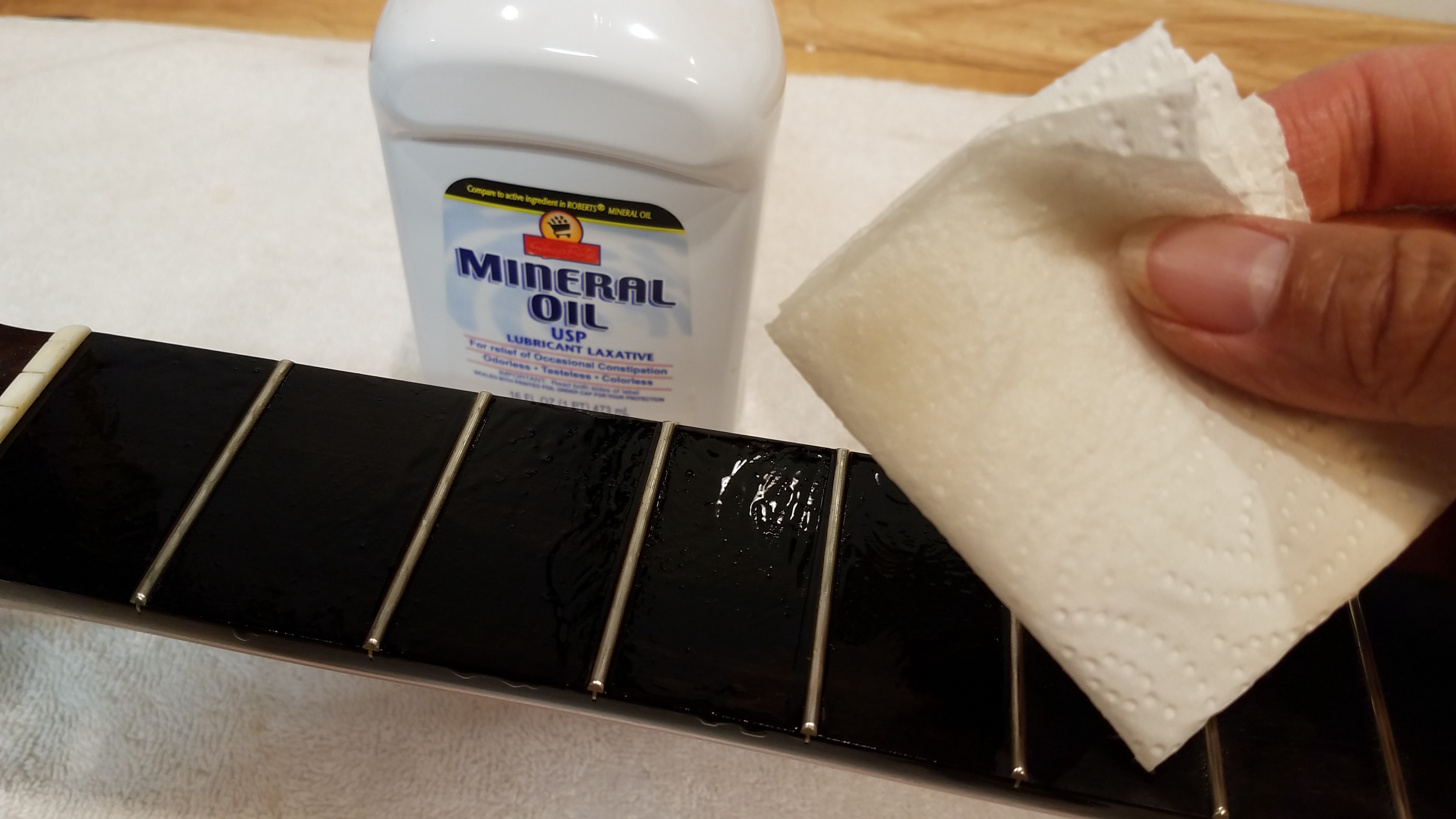
Let the oil sit for about 5 minutes. Using new towels and a buffing action with pressure, wipe away as much oil as you can from the fingerboard and frets. Make sure to reach the corners where the fingerboard meets the edges of the frets.
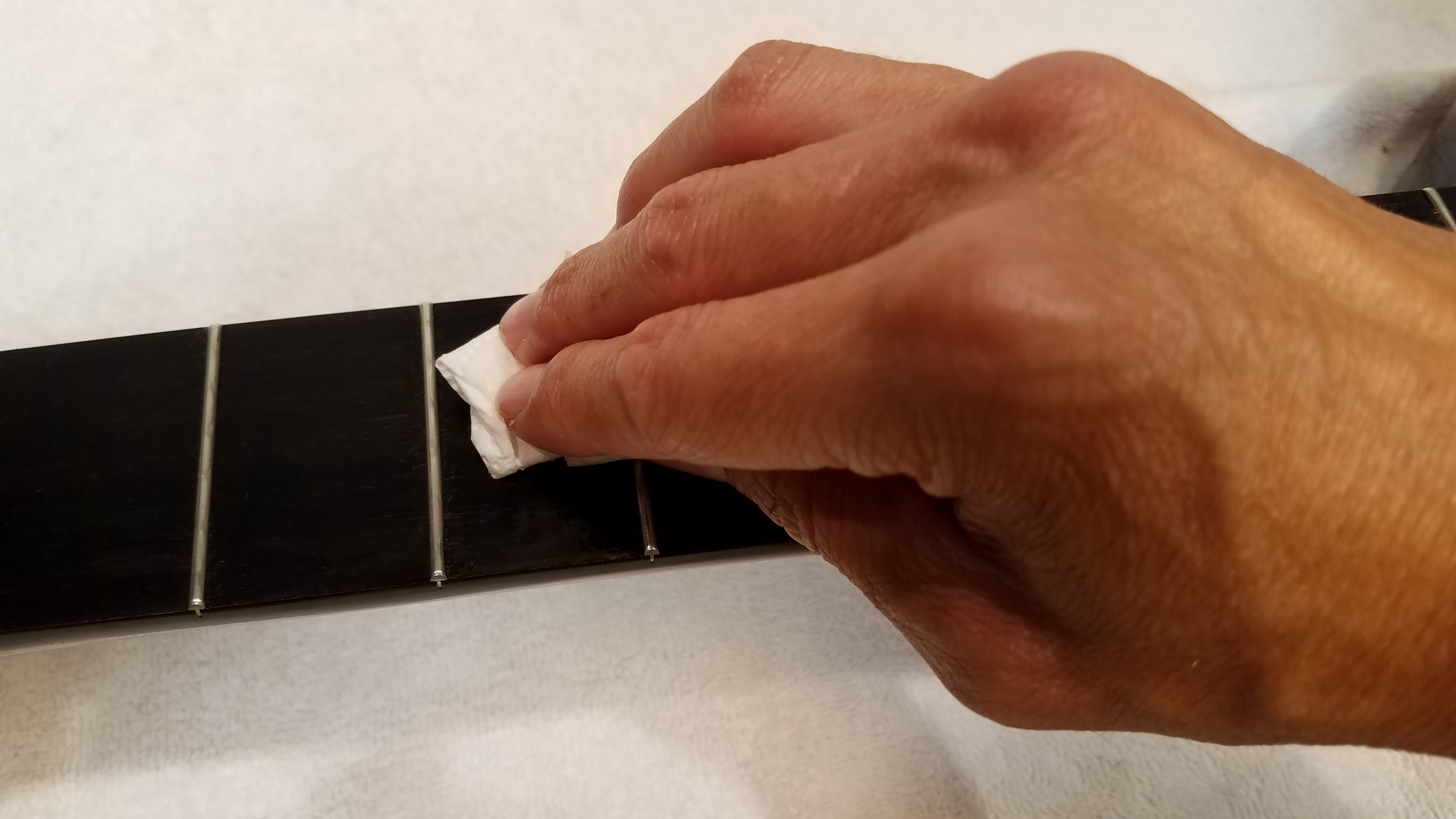
The results are rewarding:
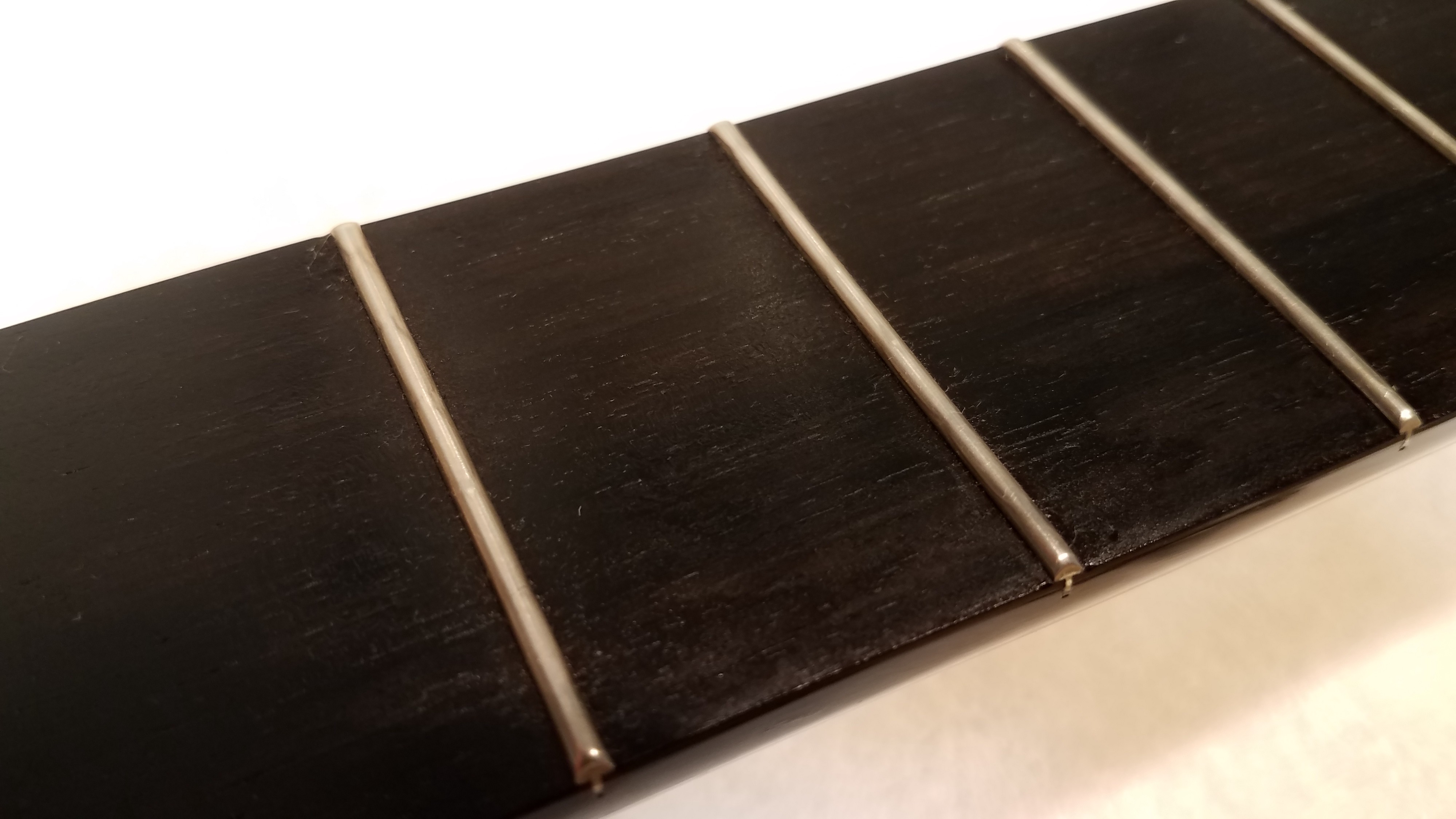
If your fingerboard has gunk, apply some mineral oil to the corner of the abrasive side of a dish sponge.
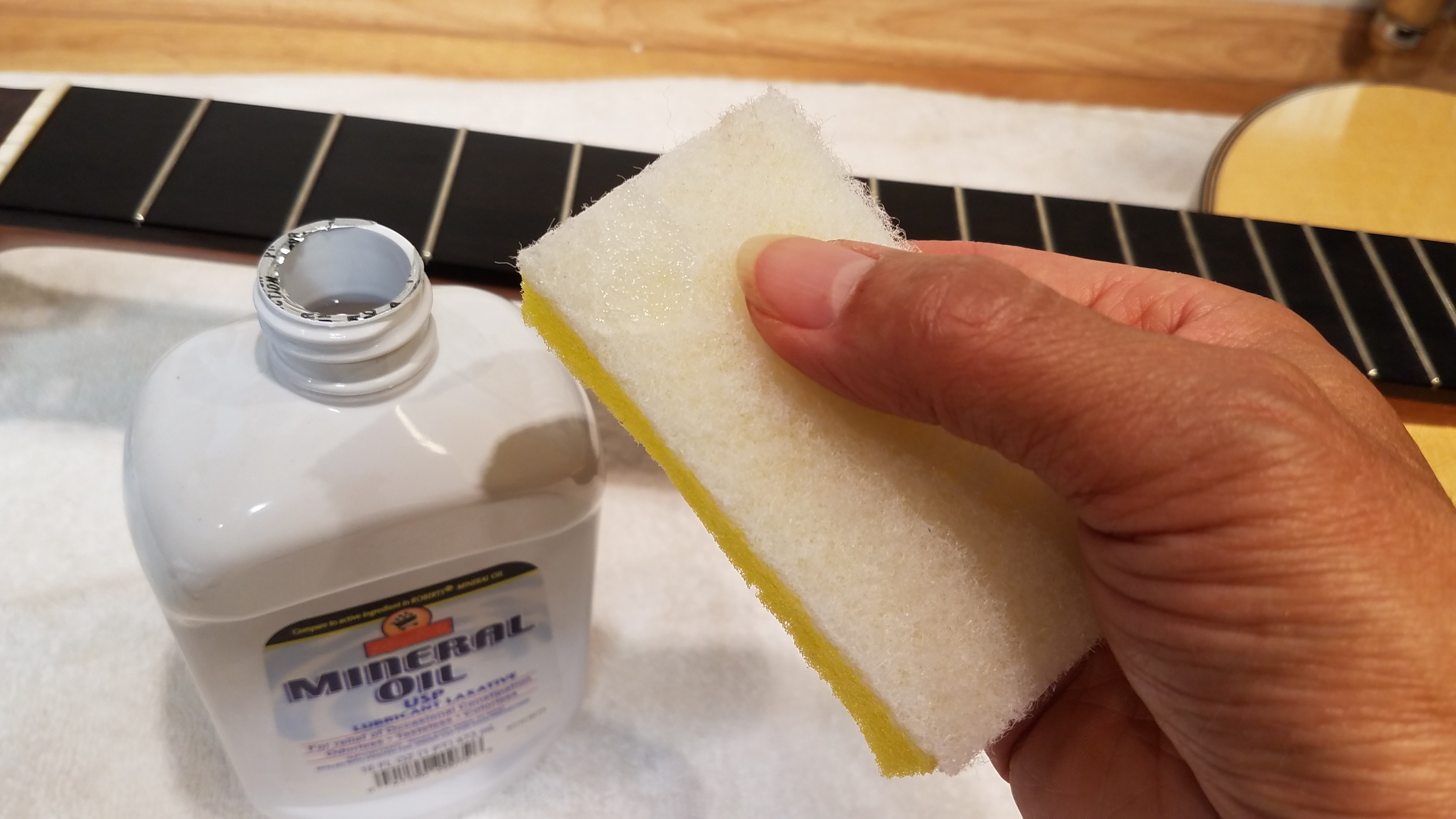
Lightly scrub away any build-up, using the oil as a lubricant and solvent. Scrub right up to the edge of the frets.
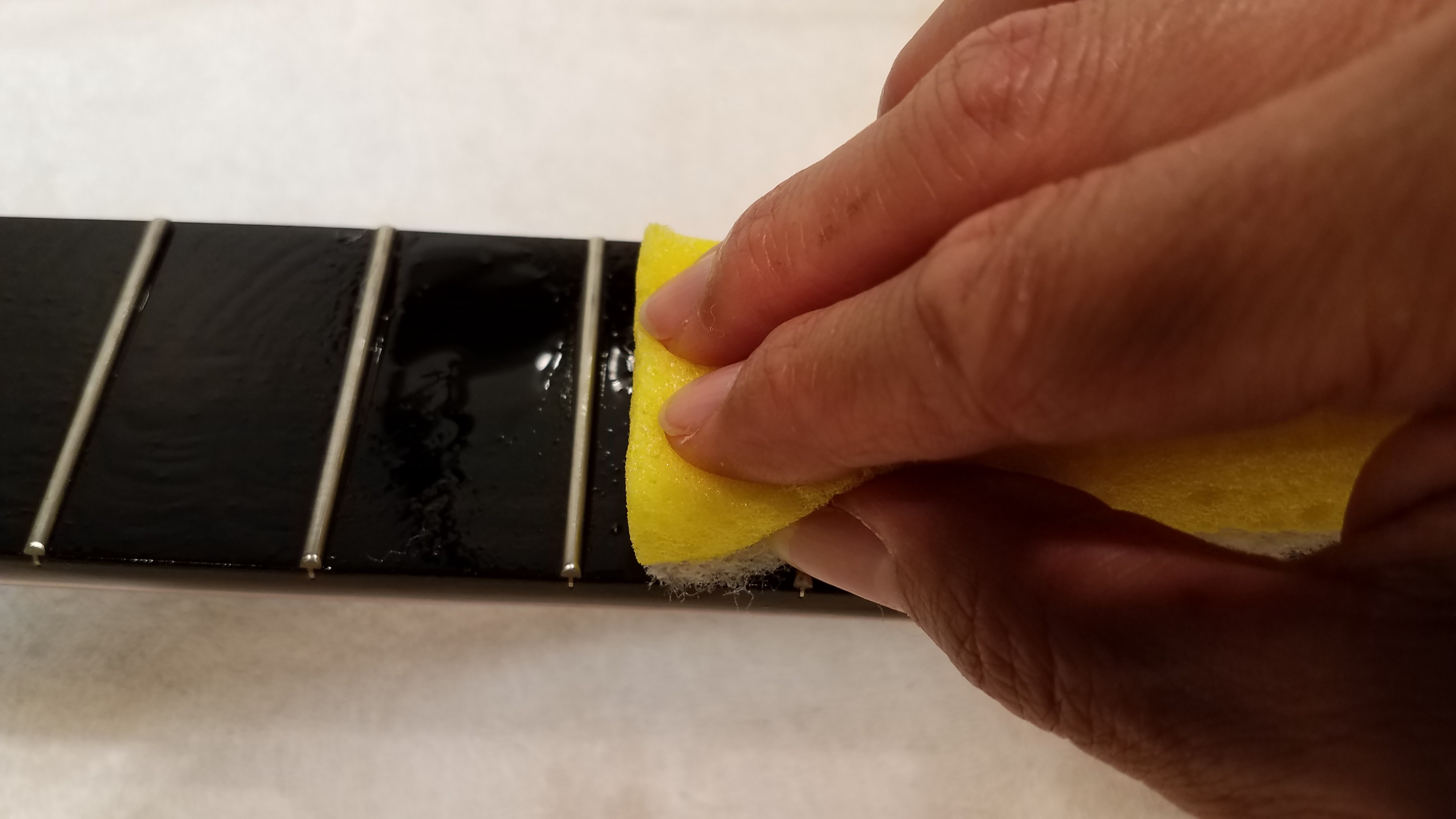
As described above, wipe away the excess oil and grime with new paper towels. If the build-up is severe, you may have to repeat the process.
Now take a moment to inspect your guitar.
This is the perfect time to do a global inspection of your guitar. Look carefully for things like cracks, separating joints, and protruding fret ends. In the next installment, we?ll talk about how you can work with your local luthier to remedy these problems.
Until then, we hope you?re feeling inspired to clean up that fingerboard and get to practicing! Check out tonebase.co for more classical guitar educational content.
About Garret Lee ? https://www.garrettleeguitars.com/
Garrett Lee has enjoyed playing guitar since the age of nine. In 1999, his fascination and curiosity with guitar design, coupled with his love for woodcraft, drew him to begin building classical guitars. Trained as a research scientist with a Ph.D. in biochemistry, he enjoyed a successful career in academic research and later, in biotechnology. He was compelled by the challenge and intrigue of lutherie to transition to full-time building in 2006.
Gary?s research background inspires creativity, thoughtful design, and exacting execution. His handcrafted classical guitars incorporate traditional and contemporary design. Midway through his development, Gary received mentorship from celebrated American luthier John Gilbert.
tonebase gives you instant access to knowledge from the world?s greatest guitarists, performers and educators. Use the code TONEBASE-BLOG to get $15 OFF any membership at https://tonebase.co

